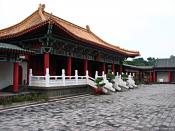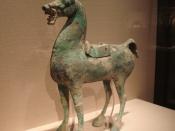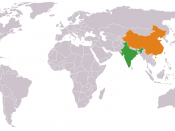Period 4/5
September 8, 2014
Prompt: Analyze the differences and similarities in classical China and India.
Classical India and China were among one of the oldest and most fascinating civilizations that have existed during the Classical period in 1000 B.C.E-600 B.C.E. As both civilizations developed, they both showed significant uniqueness. In fact, India and China shared many political, cultural, and economical similarities. But despite their similarities, they too acquired distinctive qualities throughout the same categories.
To begin with, India and China's political systems had their differences, but they also had significant similarities. In China they had a centralized government, meaning they were ruled by an emperor of a royal family. These emperors controlled China through a bureaucratic system. But before a person can be part of the bureaucracy, they first have to take a civil service exam because the government was run by the civil service. This test was really hard and requires a lot of studying.
Most of the people who took the exam were the rich people because they could afford tutors or go to universities for them to study. The emperor divided his empire into 36 small provinces, and in each provinces has a pair of government officials in charge of it. The reason why there were two officials is so they can keep an eye on each other. The place you get in the civil service depends on the score you get on the exam. The way this whole thing works is that the empire gets broken down in half with two officials for each, and then the provinces gets broken into smaller provinces again with two officials in charge of it. And the unit goes smaller and smaller, each unit reporting to the official above from them. These levels of officials were paid very...


